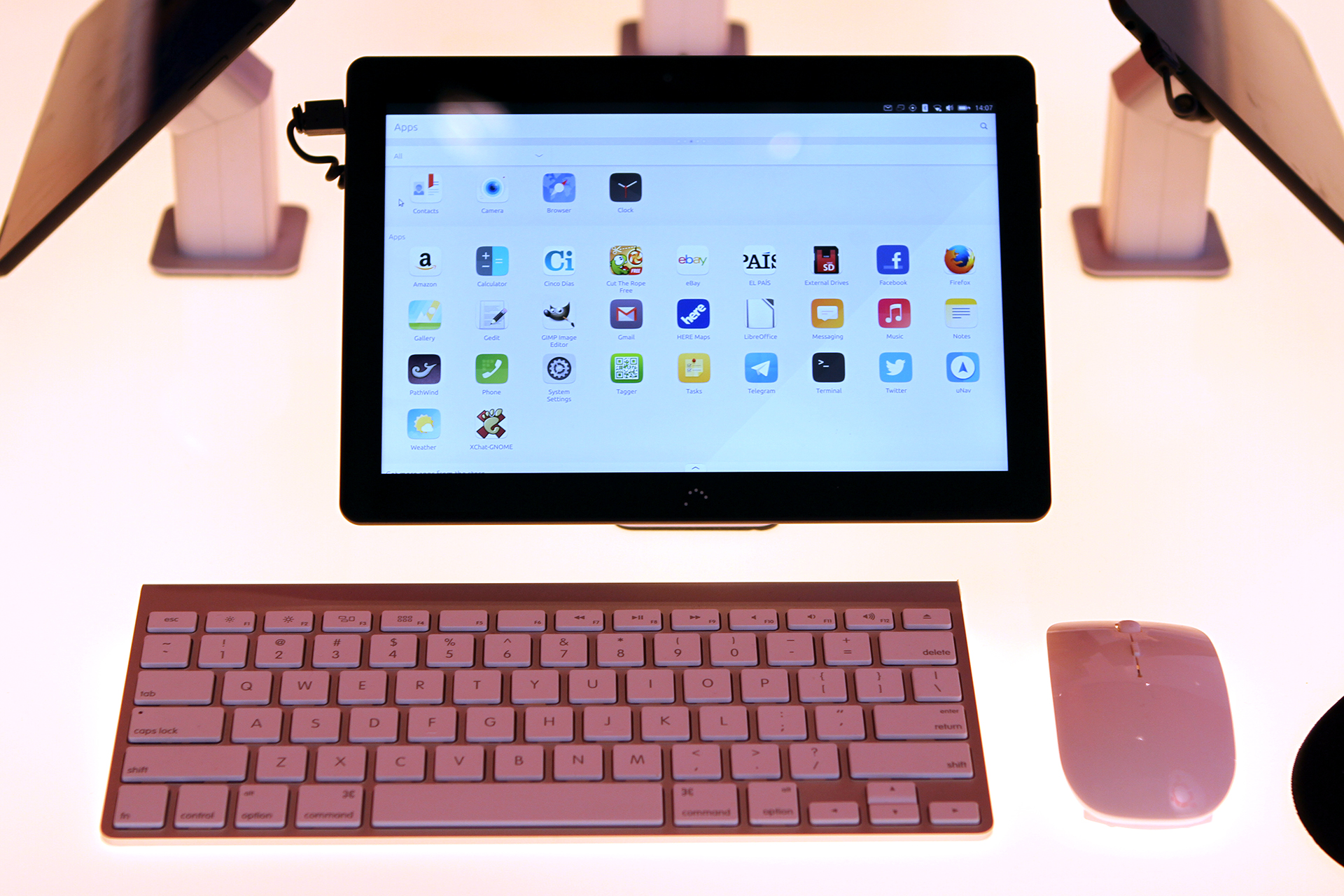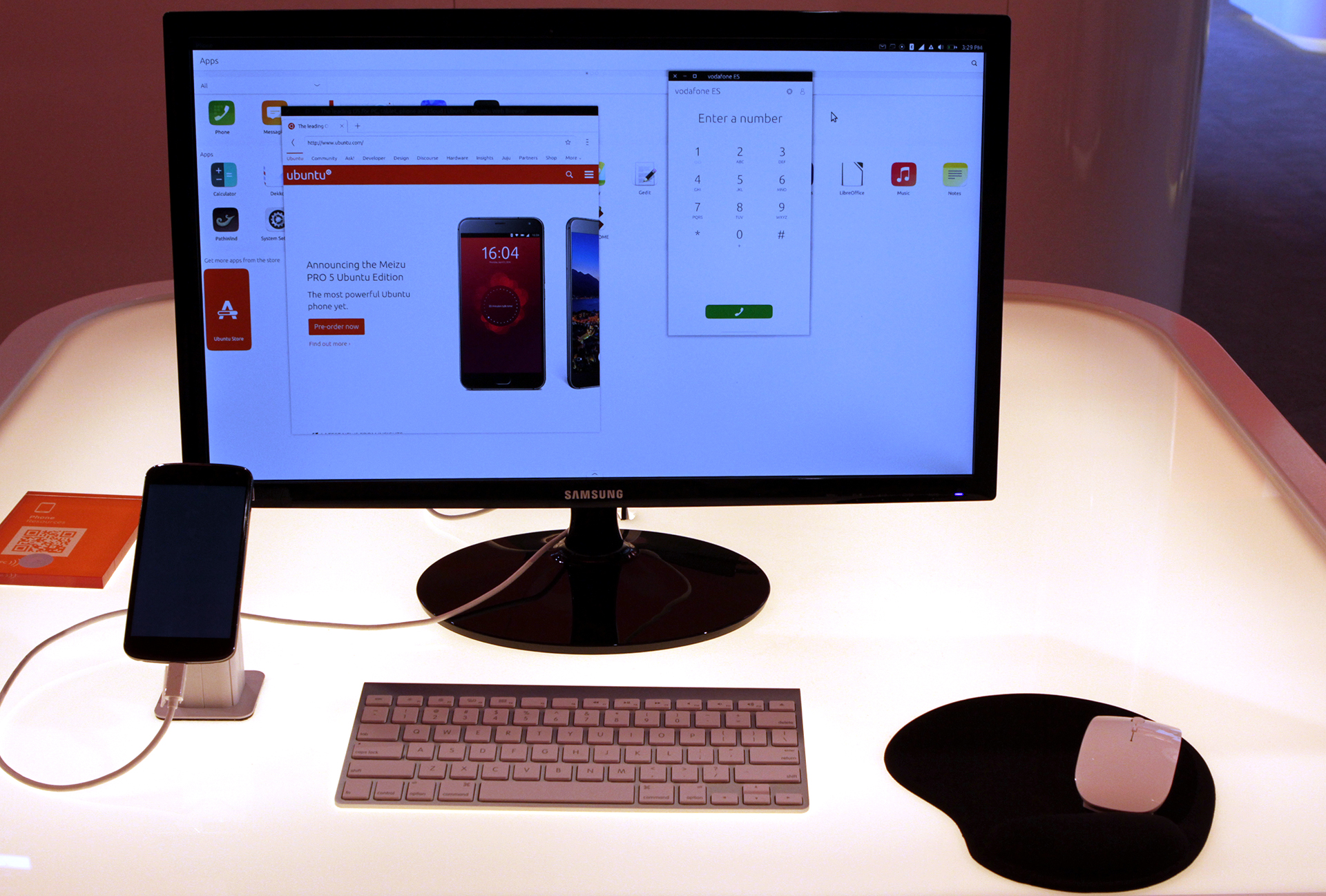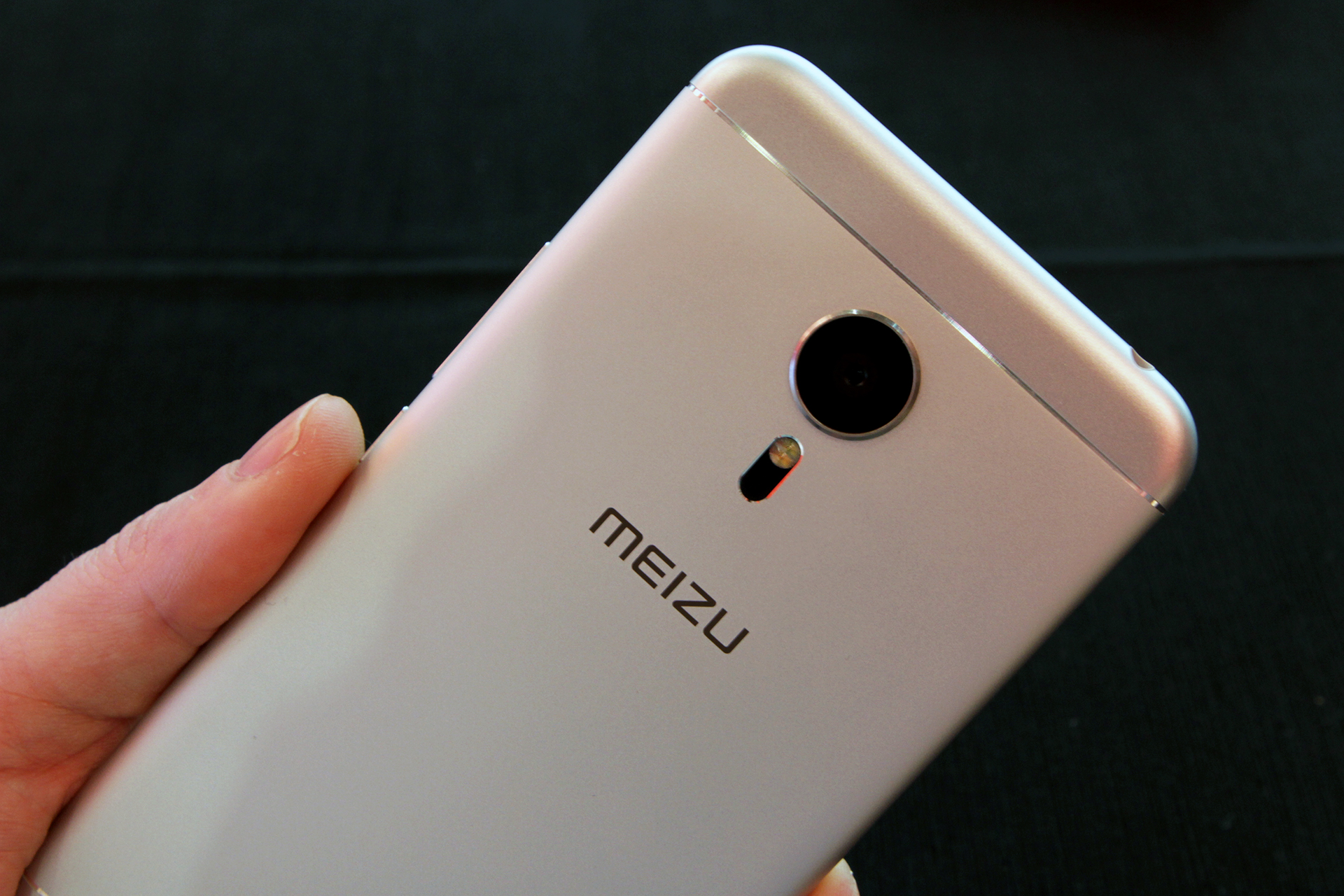Canonical Impresses With Ubuntu Core And Low-Power Mobile Devices
We saw three surprising things at Canonical’s booth at Mobile World Congress 2016, and each has to do with conversion. By "conversion," I mean a mobile device equipped with Ubuntu Core – a shared code base that enables apps to run on mobile and desktop, whether designed for touch or mouse and keyboard input – that can connect to an external monitor and see the apps optimized for the larger display.
If that sounds a lot like Microsoft’s Universal Apps and Continuum, that is because it’s the same concept. But as Microsoft is struggling to finish and polish its software, Canonical went ahead and did it better.
A Midrange Tablet Impresses
Even after an impressive web demo ahead of the show wherein Canonical demonstrated a tablet running a PC-like experience with a mouse and keyboard, I had little optimism that the BQ Aquaris M10 Ubuntu Edition tablet would be able to multitask as Canonical proclaimed it could. The specs just seemed too middling: a MediaTek quad-core MT8163A (up to 1.5 GHz) and 2 GB of RAM?
I was wrong.
Richard Collins, Ubuntu Mobile Product Manager for Canonical, walked me through a demo of the tablet in action. It had a mouse and keyboard connected via Bluetooth, and he swiftly opened up a number of applications. In the video, you can see that he has a web browser running in addition to a music player, contacts, email and more.
Touch Mode
He started off showing me touch mode, wherein you can swipe in from the left to show a list of app icons. When you tap to open an app, you can then do a three-finger drag to stick it on the left side of the screen, so you have one larger window and one smaller window -- what’s called the “Side Stage.” (This, versus the larger “Main Stage” window of the tablet.) You can interact with both open apps at once.
Get Tom's Hardware's best news and in-depth reviews, straight to your inbox.
If you want a Side Stage app to appear on the Main Stage, you can just three-finger drag it to the larger area.
When you slide in from the right, you can see all your open apps in tiles, and you can tap any to bring them to the forefront. Within the Side Stage, you can actually swipe from the right to toggle through your open apps, too.
Desktop Mode
Then he brought the mouse and keyboard into the conversation. You can, by the way, use the touch gestures even while the mouse and keyboard are connected. To engage the mouse-and-keyboard-friendly mode, you bring up a panel and toggle on "Desktop Mode." In Desktop Mode, you can see all your open apps in windows, just like on any PC desktop. All the same apps you had running in Touch Mode are still open; they just automatically optimize themselves for the Desktop Mode. This change happens instantly -- so quickly that if you blink, you’ll miss it.
Just like on a regular PC, you can click and drag the windows around as you see fit. And you still get the app icon list on the left side of the display -- you just mouse over, and it will pop out.
Collins opened LibreOffice as well as a spreadsheet. It took maybe a beat longer to open than such an application would on a regular PC. At this point, he had LibreOffice, Scopes, System Settings, Music, the web browser, Contacts and xChat GNOME all running.
After I shut the camera off, by the way, I dug in there to see if I could choke the system. I hit “play” on the music app, opened up the camera so the “live view” was up, loaded a couple of web pages, and pulled up a spreadsheet and started typing. There was simply no lag. In terms of responsiveness, it felt as if I was on my regular laptop. The web pages even loaded more quickly on the tablet than they sometimes do on my laptop. I clicked back and forth between open applications. Smooth as mantequilla.
The only limitation I saw at this point is that there’s no support for a dual-display mode. Therefore, you can use the tablet like a PC, or connect the tablet to an external display and use it as a PC, but you can’t do both. Canonical told me that this is a limitation of the chipset, but that “in theory, with the right hardware, [dual display] will be possible in future.”
Just Some Old Smartphone Acting Like A PC
I was sufficiently impressed by the Aquaris M10 Ubuntu Edition tablet demo’s multitasking performance, but Collins had another surprise in store when we switched to the smartphone-as-PC demo.
Thanks to Ubuntu Core, you can connect a smartphone to an external monitor, and the phone’s open applications will show up as windowed, desktop-looking apps.
As with the tablet, you can’t get a dual-screen experience. However, Canonical cleverly found a way to use the smartphone’s touch display as an input device. The phone’s display is off, but in the video (above), you can see that you can use it to move the mouse cursor around just as you would on any laptop touchpad, and you can perform taps and a two-finger scroll. (When connected to an external display, the tablet offers the same.) Connect yourself a keyboard, and you’re all set with a hybrid laptop/desktop input experience and a PC-like environment on your monitor.
However, it’s not as fluid as the tablet experience. There’s a small amount of mouse input lag, for example, and the apps didn’t seem to respond quite as readily as one would like. That would be more disappointing if the attached smartphone powering the experience was a high-end device, but effectively, they were using just some old smartphone. It was, in fact, a Nexus 4--a phone so old that you can’t even buy it anymore.
I pressed Collins on the minimum required specs for this experience, and I seemed to have stumped him, as he didn’t have a ready answer. But then he made this point: Canonical hasn’t bothered to define minimum requirements because there are so few phones available that can’t run it.
All a handset really needs, Collins said, is 2 GB of RAM. The rest is gravy. The Nexus 4 was used just as a prototype, and Collins told me that another handset was coming this year that should fully support this experience. Around that time, a dual-display feature should become available, as well.
“Odd,” might be your next thought, “Why not just use that recently-announced, high-end Meizu Pro 5 Ubuntu Edition smartphone?”
A High-End But Hamstrung Handset
That thought would make sense--the Meizu Pro 5 is a fairly powerful device, and it has a USB Type-C port that should make it ideal for pumping its contents to an external display. But there’s one great big problem: Inexplicably, the phone doesn’t support video out through the Type-C port.
Regarding this oversight, Collins said, “This is a chipset dependency and requires the chipset supplier to enable video support for the USB Type-C component on the Board Support Package. We expect chipset manufacturers to fully enable USB-C type functionality for future boards.”
He continued, “There are alternative technologies we are evaluating and expect products in the near future.” One of these potential solutions, he said, is Wi-Fi Direct, which could potentially turn any Ubuntu phone into a “convergence” phone. For now, though, the Pro 5 is “just” an Ubuntu phone.




Basically an iPhone 6 clone in terms of design, the Pro 5 has a Samsung Exynos 7420 SoC with a Mali T760 GPU, 3 GB or 4 GB of LPDDR4 RAM, 32 GB or 64 GB of UFS 2.0 storage, and a rear 21.16MP camera (with a Sony IMX230 sensor).
Being an Ubuntu phone, it uses Scopes; the UI design is intended to keep people in the experience as opposed to bumping them off to web-based “apps,” and to that end, many apps have a unified Ubuntu look, like the SoundCloud app in the video.
Enabling Convergence
Collins said that devs can enable this Ubuntu-on-any-screen capability fairly easily, using Canonical’s SDK. “Our SDK has UI components, which when used to create applications to run on Ubuntu devices will allow the app to dynamically change so that it can be used for touch as well as mouse control and input,” he stated. “This is a both a design and a technical solution we have introduced to allow any app to be relevant for convergence.”
So, yes, devs have to go into their app’s code and add a few lines, and that means currently not all apps can switch from touch mode to desktop mode as smoothly as the ones I saw demoed. Surely, that will lead to a certain amount of consternation for users, but as demand increases, the number of enabled apps should follow quickly.
What Canonical is doing here is all the more impressive because of the issues Microsoft appears to be having in implementing its own convergence experience for mobile devices using Windows 10 and Continuum. Windows 10 for phones is still not finished, and as Collins noted, “The mobile version [of Windows 10] has the ability to display certain apps to a desktop, but still remains a mobile OS at its core.”
He added, “Continuum is therefore a solution for the Win 10 mobile OS variant which only works for certain apps. It is a feature of their mobile OS and is not therefore based on true OS convergence in the same way as Ubuntu.”
Canonical itself still has some work to do. More apps need to get the convergence treatment, and we need to see more available devices, Further, getting video-out capabilities on these higher-end Ubuntu phones is crucial--there's no two ways about that--and adding dual-display support for both phones and tablets will take the experience to a more compelling level.
Even so, Canonical has proven that its work with Ubuntu Core and the “convergence” paradigm is impressive and promising.
Seth Colaner is the News Director for Tom's Hardware. Follow him on Twitter @SethColaner. Follow us on Facebook, Google+, RSS, Twitter and YouTube.
Seth Colaner previously served as News Director at Tom's Hardware. He covered technology news, focusing on keyboards, virtual reality, and wearables.
-
mitch074 To be fair, Ubuntu showcased a working prototype (as in, an image was publicly available that allowed Nexus 4 users to tinker with it) in early 2013 - Microsoft copied it and pushed their incomplete clone to market. Why do you think they aren't up in arms suing Canonical right now? Because they'd lose!Reply
During that time, Canonical polished the prototype, and 3 years later you have a mature version ready to sell. -
mitch074 To be fair, Ubuntu had been working on that concept much earlier than Microsoft: a Nexus-based prototype was shown around in 2013, that could seamlessly switch from desktop mode when docked (running Gimp and LibreOffice) to the phone-optimized Ubuntu Touch interface.Reply -
10basetom "Inexplicably, the phone doesn’t support video out through the Type-C port." -- It's not inexplicable; it's because it doesn't have a USB 3.1 port. In fact, the only phones on the market with USB 3.1 are the new Microsoft phones.Reply -
sylentz199 ReplyTo be fair, Ubuntu showcased a working prototype (as in, an image was publicly available that allowed Nexus 4 users to tinker with it) in early 2013 - Microsoft copied it and pushed their incomplete clone to market. Why do you think they aren't up in arms suing Canonical right now? Because they'd lose!
Win8 in 2012 started the Desktop/Mobile API consolidation that MS has been pushing. Continuum like Gimmicks depend on the consolidation.
During that time, Canonical polished the prototype, and 3 years later you have a mature version ready to sell. -
kyrofa Ubuntu Core is based on Snappy, and is currently focusing on IoT devices. What's being discussed in this article is not Ubuntu Core, but the Ubuntu Phone.Reply -
3arn0wl Isn't the point that the code is converging to a core and snappy system: the code for the phone will be the same as IoT, desktop, etc..Reply
-
kyrofa ReplyIsn't the point that the code is converging to a core and snappy system: the code for the phone will be the same as IoT, desktop, etc..
Perhaps so, but that's not currently the case. Ubuntu Touch will probably be based upon Snappy eventually, but Snappy is still in development. Ubuntu Touch, with the convergence you see here, uses the same code base for all form factors. It's just not Snappy/Ubuntu Core :) . -
3arn0wl As I understand it, Ubuntu "touch" (that term will disappear soon enough) is using core and snappy - that's what Canonical realised they had to develop to ensure everything remains secure. And yes, touch is still in development, though it now seems to be evolving at quite a pace. Hopefully, the experience will be up to par with Unity7 by the time we get to 16.10, so that Canonical can deploy convergence.Reply




